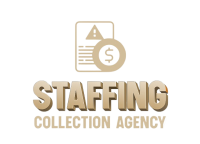When a big client misses a staffing payment, it can send ripples through your business’s financial stability and cash flow. Handling such a situation with tact and efficiency is crucial for maintaining a professional relationship while ensuring recovery of the owed amount. This article outlines a systematic approach to dealing with missed payments, from initial response to exploring debt recovery options, considering legal actions, understanding the financial implications, and implementing future safeguards.
Key Takeaways
- Quickly assess the situation and open a line of communication with the client to understand the reason behind the missed payment and set a clear deadline for resolution.
- Utilize a 3 phase Recovery System for debt collection, starting with direct communication and escalating to involving affiliated attorneys if necessary.
- Consider the age, size of the account, and potential recovery rates when deciding on pursuing legal action, which may include upfront legal costs.
- Analyze the impact of non-payment on your business’s cash flow and operations, and make necessary adjustments to maintain financial health during the recovery process.
- Strengthen payment terms, regularly monitor client accounts, and develop a contingency plan to mitigate the risks of future payment issues.
Initial Response to Missed Payment
Assessing the Situation
When a big client misses a staffing payment, the first step is to assess the situation thoroughly. Determine the severity of the missed payment and its potential impact on your business operations. Check the payment history and the client’s current financial status. This initial assessment will guide your next steps.
- Review the contract terms for any clauses related to missed payments.
- Document all communication and attempts to resolve the payment issue.
- Analyze the client’s payment patterns and any recent changes.
It’s crucial to remain professional and avoid making assumptions. A missed payment could be a simple oversight or a sign of deeper financial troubles.
If the missed payment is a recurring issue, consider the implications for your business’s cash flow and service delivery. A single missed payment may be manageable, but repeated delays can signal a need for more drastic measures.
Communicating with the Client
Once a missed payment is identified, prompt communication is key. Reach out to the client using their preferred method of contact—be it email, phone, or in-person meeting. Ensure the tone is professional and focused on finding a resolution.
- Clearly state the payment issue.
- Provide a detailed invoice and payment history.
- Express willingness to discuss any disputes or concerns.
It’s crucial to document all interactions. This not only helps maintain a clear record but also supports any future recovery actions. If the client is unresponsive, escalate the communication frequency and consider sending a formal notice.
Maintain a balance between firmness and understanding. Your goal is to preserve the relationship while securing payment.
Setting a Deadline for Payment
Once communication lines are open and the client acknowledges the missed payment, it’s crucial to set a clear deadline. Establish a firm but reasonable date for the payment to be made, taking into account the client’s circumstances and your own cash flow needs. This deadline should be communicated in writing, ensuring there is a record of the agreement.
- Outline the consequences of further delay, such as late fees or cessation of services.
- Reiterate the value of the ongoing partnership and your willingness to find a solution.
- Provide a simple and direct payment method to avoid any additional complications.
Setting a clear deadline is not just about recovering funds; it’s about maintaining a professional relationship and setting expectations for future interactions. It’s a balance between firmness and flexibility, always aiming for a resolution that benefits both parties.
Remember, the goal is to secure payment without damaging the relationship. If the deadline passes without payment, be prepared to escalate the matter, but always keep the lines of communication open.
Exploring Debt Recovery Options
Understanding the 3 Phase Recovery System
The 3-Phase Recovery System is a structured approach to debt recovery, designed to maximize the chances of reclaiming owed funds. Phase One kicks off within 24 hours of account placement, involving a series of communications aimed at the debtor, including letters, calls, and skip-tracing to gather financial information.
In Phase Two, the case escalates as it’s forwarded to an affiliated attorney within the debtor’s jurisdiction. Legal letters and calls intensify, signaling a serious shift towards legal enforcement.
By Phase Three, the path is clear: either close the case if recovery seems unlikely or proceed with litigation, understanding the associated costs. This phase is critical as it determines the final course of action and potential financial recovery.
Evaluating the Age and Size of the Account
When a big client misses a staffing payment, it’s crucial to evaluate the age and size of the account. This assessment helps determine the appropriate debt recovery strategy. Accounts under a year old typically have a higher recovery rate, while older accounts may prove more challenging.
Age and size of the debt influence the collection rates and the likelihood of successful recovery. For instance, accounts under $1000 may incur higher collection rates due to the relative cost of recovery efforts.
Manage partial payments by documenting, communicating clearly, seeking legal advice. Establish strategies, evaluate debtor’s financial status for debt recovery viability.
Consider the following rates for different scenarios:
- Accounts under 1 year: 30% (1-9 claims) or 27% (10+ claims) of the amount collected.
- Accounts over 1 year: 40% (1-9 claims) or 35% (10+ claims) of the amount collected.
- Accounts under $1000: 50% of the amount collected, regardless of the number of claims.
These figures underscore the importance of timely action and the potential cost implications of delayed recovery.
Considering Standard Collection Activities
When a big client misses a staffing payment, standard collection activities become a necessary step. Initiate contact promptly; this shows urgency and professionalism. Use multiple communication channels—calls, emails, faxes—to reach the client. Ensure each interaction is documented for future reference.
Persistence is key. Regular follow-ups signal to the client the importance of settling their debt. If initial attempts fail, consider escalating the matter within the client’s organization or employing a collection agency. Here’s a brief overview of potential actions:
- Send a series of demand letters escalating in tone
- Implement phone call campaigns to the debtor
- Engage in skip tracing to locate additional contact information
- Report the delinquency to credit bureaus if applicable
Remember, the goal is to recover funds while maintaining a professional relationship. It’s a delicate balance between firmness and understanding.
Review the age and size of the account; older and larger debts may require a more aggressive approach. Articles on chasing payments, recovering unpaid staffing services, addressing non-payment in seasonal contracts, and navigating bankruptcy in staffing agencies provide valuable insights. The table below outlines the collection rates based on claim quantity and account details:
| Claims Quantity | Account Age | Account Size | Collection Rate |
|---|---|---|---|
| 1-9 | < 1 year | > $1000 | 30% |
| 1-9 | > 1 year | > $1000 | 40% |
| 1-9 | Any | < $1000 | 50% |
| 10+ | < 1 year | > $1000 | 27% |
| 10+ | > 1 year | > $1000 | 35% |
| 10+ | Any | < $1000 | 40% |
The rates vary, but the objective remains the same: to secure payment efficiently and ethically.
Legal Considerations and Actions
Determining the Viability of Litigation
Before leaping into legal action, a careful evaluation is crucial. Assess the debtor’s assets and the facts of the case to gauge the likelihood of successful recovery. If prospects are dim, consider closing the case to avoid unnecessary expenses.
Costs are a significant factor. Litigation requires upfront payment for court costs and filing fees, typically ranging from $600 to $700. Weigh these against the potential recovery.
Deciding on litigation is not just about the potential to recover funds; it’s about making a strategic business decision.
Consider the collection agency’s rates for litigation cases:
- Accounts placed with an attorney: 50% of the amount collected.
Remember, if litigation fails, you owe nothing further. The decision to litigate should balance the financial stakes with the practicality of a successful outcome.
Understanding the Costs of Legal Action
Before proceeding with litigation, it’s crucial to understand the financial commitment required. Initial costs can include court fees and filing expenses, typically ranging from $600 to $700. These are upfront costs that must be paid regardless of the outcome. Additionally, if you engage a collection agency, their rates may vary based on the age and volume of claims. For instance, accounts under one year may incur a 30% fee on the amount collected, while older accounts could be charged up to 50%.
It’s important to weigh these costs against the potential recovery. A tailored fee structure can help manage expenses, but always consult with legal professionals to grasp the full implications. Remember, if litigation efforts fail, you may not owe additional fees to the firm or affiliated attorney, but the sunk costs remain.
Be mindful of litigation risks and costs. Assess the viability of your claim and consult experts to avoid unnecessary financial strain.
The Process of Filing a Lawsuit
When the decision to pursue legal action is made, understanding the process is crucial. The initial step involves paying upfront legal costs, which can range from $600 to $700, depending on the jurisdiction. These costs cover court fees, filing fees, and other related expenses.
Once the financial commitment is made, the affiliated attorney will file a lawsuit on your behalf. This includes seeking recovery of all monies owed, as well as the costs incurred to initiate the lawsuit. If litigation is unsuccessful, the case is closed, and no further fees are owed to the firm or attorney.
Costs and rates vary depending on the age and size of the account, with percentages ranging from 30% to 50% of the amount collected. It’s essential to weigh these potential costs against the likelihood of successful recovery.
The choice to litigate is significant. It requires a balance of potential gain against the risk and expense involved. Act promptly and with full knowledge of the implications.
Financial Implications for Your Business
Analyzing the Impact of Non-Payment
When a big client misses a staffing payment, the ripple effects can be significant. Assess the financial shockwaves promptly to understand the full scope of the situation. Non-payment can lead to a domino effect of financial strain, affecting not just immediate cash flow but also long-term financial planning.
- Immediate cash flow disruption
- Compromised ability to meet payroll and vendor obligations
- Potential damage to credit rating
- Erosion of investor or stakeholder confidence
Consider the opportunity cost of the funds not received. This includes potential projects or investments that are now out of reach, as well as the time and resources spent chasing the payment. It’s crucial to quantify these impacts to make informed decisions moving forward.
While the direct loss of income is evident, the indirect costs, such as employee morale and market reputation, can be equally detrimental. These intangible factors must be accounted for in your recovery strategy.
Managing Cash Flow During Recovery
When a big client misses a staffing payment, the financial stability of your agency can be at risk. Prioritize essential expenses to maintain operations while pursuing debt recovery. Cut non-essential spending and consider temporary credit solutions to bridge gaps.
Review your accounts receivable and tighten up on collections. Quick action can prevent a ripple effect on your business’s financial health. Here’s a simple action plan:
- Identify critical payments such as payroll and rent
- Negotiate with suppliers for extended payment terms
- Explore short-term financing options
- Accelerate other receivables where possible
Maintaining a steady cash flow is crucial during the recovery period. It ensures that your business remains operational and capable of meeting its own financial obligations.
Remember, the goal is to stabilize your cash flow without compromising the future of your business. Keep communication open with all stakeholders and update them on the situation and your actions.
Adjusting Business Operations
When a big client misses a payment, it’s crucial to reassess and adjust your business operations to maintain stability. Consider the following steps:
- Review and prioritize expenses: Identify essential costs and reduce non-critical spending.
- Optimize resource allocation: Shift resources to areas with immediate revenue potential.
- Diversify your client base to minimize the impact of future payment issues.
- Renegotiate terms with suppliers: Seek more favorable payment schedules to ease cash flow.
Adjusting operations is not just about cutting costs; it’s about strategic realignment to ensure business continuity.
Remember, the goal is to create a more resilient business structure that can withstand the unpredictability of client payments without compromising on the quality of your services or the morale of your staff.
Future Safeguards and Preventative Measures
Implementing Stronger Payment Terms
To mitigate risks associated with missed payments, implementing stronger payment terms is crucial. This involves clearly defining payment expectations and consequences for non-compliance. Start by revising contracts to include specific payment milestones and late payment penalties.
- Establish clear payment terms upfront
- Define consequences for late payments
- Require deposits or advance payments
Ensure all staff are trained on the new terms and are empowered to enforce them.
By proactively setting these terms, you create a framework for payment monitoring, recovery strategies, and understanding the legal implications for defaults. This not only helps prevent financial losses but also maintains business relationships.
Regular Monitoring of Client Accounts
To safeguard your staffing agency’s financial health, regular monitoring of client accounts is essential. By keeping a close eye on payment patterns, you can quickly identify any deviations that may signal trouble ahead.
Recognizing signs of financial distress early allows for timely interventions. This could involve adjusting credit terms or initiating a dialogue to understand the client’s situation better.
Proactive monitoring and swift action can prevent the escalation of payment issues and protect your agency from significant losses.
Here’s a simple checklist to ensure consistent monitoring:
- Review account statuses weekly
- Analyze payment trends monthly
- Flag accounts with irregular payment patterns
- Schedule regular financial health check-ups with clients
By implementing these steps, you can maintain a pulse on the financial well-being of your clients and preemptively address potential risks.
Building a Contingency Plan
In the face of payment uncertainties, a robust contingency plan is your safety net. Ensure your plan is comprehensive, covering all potential scenarios. Start by:
- Identifying key financial reserves and backup funding sources.
- Establishing alternative client acquisition strategies.
- Outlining steps for cost reduction without compromising service quality.
A contingency plan is not just a reactive measure; it’s a proactive strategy to maintain stability.
Regularly review and update your plan to reflect current risks and business objectives. This ensures you’re always prepared, come what may.
As we look towards the future, it’s crucial to implement safeguards and preventative measures to protect your financial interests. At Debt Collectors International, we specialize in providing tailored solutions to ensure your accounts receivable are managed effectively and efficiently. Don’t let overdue payments disrupt your business—take action now. Visit our website to learn more about our services and how we can assist you in securing your financial future. Our expert team is ready to provide you with a free rate quote and guide you through our proven collection process.
Frequently Asked Questions
What should be my initial response when a big client misses a staffing payment?
Your initial response should include assessing the situation to understand why the payment was missed, communicating with the client to discuss the missed payment and any underlying issues, and setting a clear deadline for the overdue payment to be settled.
What is the 3 Phase Recovery System for debt recovery?
The 3 Phase Recovery System includes Phase One with initial contact and attempts to resolve the debt, Phase Two involving an affiliated attorney within the debtor’s jurisdiction, and Phase Three which includes a recommendation for litigation or closure of the case depending on the likelihood of recovery.
How are the rates for debt collection determined?
Rates for debt collection depend on the number of claims, the age of the accounts, the amount owed, and whether the account is placed with an attorney. Rates can vary from 27% to 50% of the amount collected, depending on these factors.
What are the potential legal costs if I decide to proceed with litigation against a debtor?
If you decide to proceed with litigation, you will be required to pay upfront legal costs such as court costs and filing fees, which typically range from $600 to $700, depending on the debtor’s jurisdiction. These fees cover the filing of the lawsuit for all monies owed.
What happens if attempts to collect a debt through litigation fail?
If attempts to collect a debt through litigation fail, the case will be closed, and you will owe nothing to the collection firm or the affiliated attorney for these results.
How can I safeguard my business against future missed payments from clients?
To safeguard your business, you can implement stronger payment terms, regularly monitor client accounts for any signs of financial instability, and build a contingency plan to manage cash flow and adjust operations in case of non-payment.





